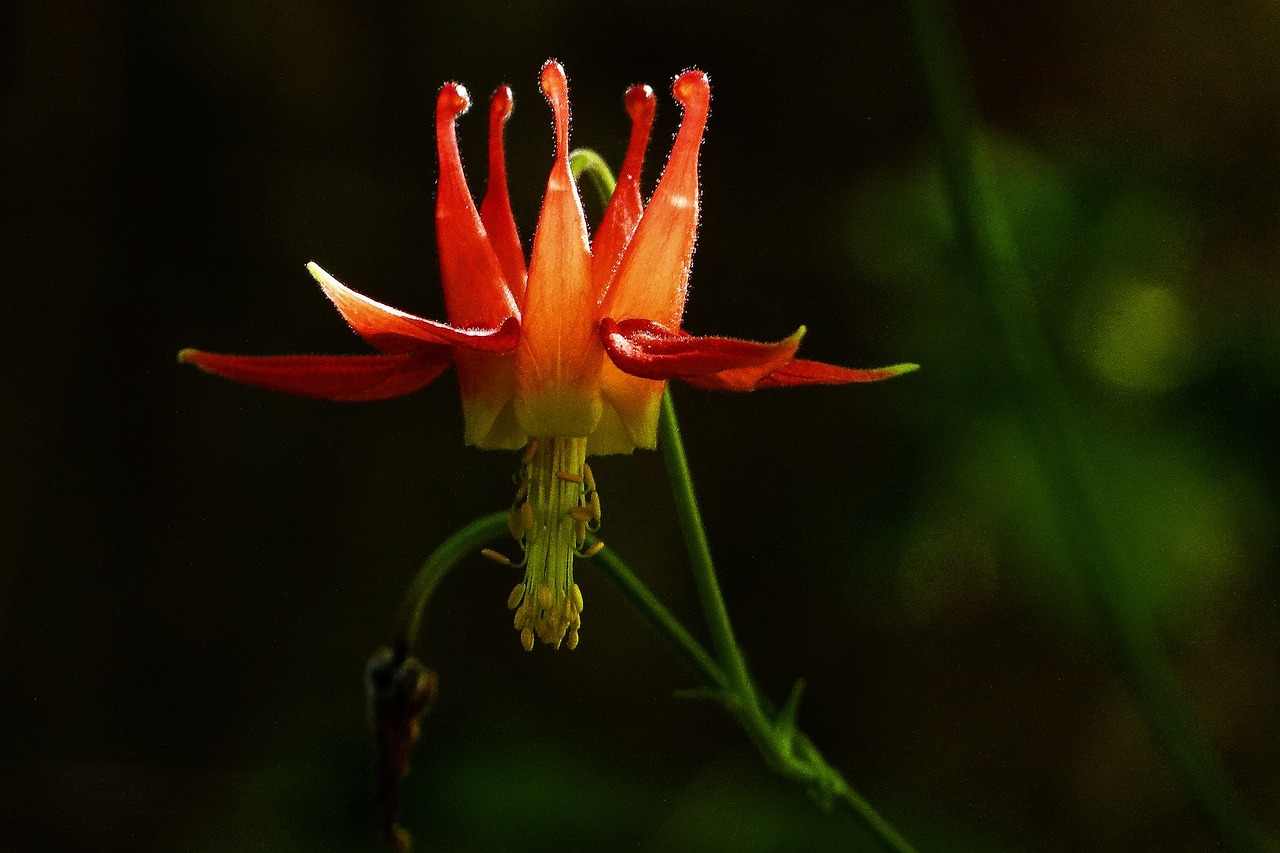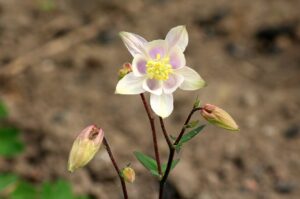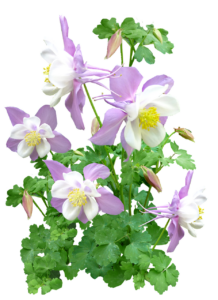Columbine
Overview
The Columbine, or Aquilegia Vulgaris, is a perennial with graceful flowers that express a whimsical charm. Commonly known as granny’s bonnet, this member of the buttercup family burgeons with blooms in varied hues like blue and pink, creating a fairy-tale allure in temperate gardens. It’s a hardy plant that adds a touch of enchantment to any outdoor space.

Characteristics
Known for its striking, nodding flowers with distinct spurs and a wide range of colors.
Region
Native to Europe; naturalized in North America; grown in zones 3 to 9.
Natural Habitat
Native columbines are commonly found in the wild in mountain areas, along streambeds, and in temperate woodlands.
Cultivation
Prefers partial shade, regular watering to keep soil moist but well-drained, and fertile, loamy soil with good drainage.
Uses and Benefits
Columbine, or Aquilegia Vulgaris, isn’t just a feast for the eyes; it carries a basket of benefits that have been valued for centuries. This herb was traditionally leveraged for its medicinal properties, particularly in Native American herbal medicine. The roots and seeds were used for their potential to relieve ailments, but always with caution due to their potent nature[^1^]. In more benign applications, the flowers themselves make for a charming, edible decoration on salads and desserts, adding a touch of elegance to any dish.
The leaves of the Columbine are also worth noting—although not commonly used in modern herbalism, they were once part of traditional remedies. It’s important to highlight that while Columbine has historical uses, any medicinal application must be approached with knowledge and care due to the presence of certain compounds that can be toxic if ingested improperly2.
Respecting its beauty and possible uses, always remember: a plant can be both a delight to the senses and a reminder of nature’s complexity, needing cautious admiration.

Cultivation Tips
To cultivate the Columbine, start by choosing a location that has moderately fertile, well-drained soil, and ensure that it has partial to full sunlight exposure. Columbine plants prefer cooler conditions, so a spot that gets afternoon shade is ideal, especially in warmer climates.
When planting, keep the crown at soil level and space the seeds or plants about 1 to 2 feet apart to give each one room to grow1. Remember to lightly press the seeds onto the soil surface without burying them deeply, as they need light to germinate[^(1)]. Water the seedlings regularly to maintain moist soil conditions, but take care not to overwater, as Columbines don’t like to sit in waterlogged soil.
Be patient with these perennials, as they may take a couple of years to burst into their full glory with vibrant blossoms—planting in spring will set them up for future success1. Once established, enjoy the dance of their delicate flowers swaying in your garden come late spring.
Seasonal Considerations
When you decide to cultivate the charming Columbine, consider its fondness for the seasonal rhythms of nature. Springtime is key, as seeds sown during its balmy days can establish themselves, getting ready for future splendor1. Patience is your companion here[1]. It’s quite common for the plant to reserve its inaugural bloom for the second year, rewarding your anticipation with a spectacular display.
The crescendo arrives in late spring, when the Columbine truly flourishes, boasting a kaleidoscope of colors from its unique, honeyed blooms5. To witness this floral ballet at its peak, nurturing the plant during its early life and watching over its first year’s growth is essential. Once it matures, each season’s return of these fairy-like flowers will be a cherished and much-awaited garden highlight.

Issues and Troubleshooting
Columbine plants, while enchanting, can encounter issues like leaf miners, which tunnel through leaves, leaving unsightly trails. If you notice this, remove affected foliage to manage these pesky insects. Additionally, powdery mildew, a fungal issue, can plague leaves during humid conditions. It’s crucial that your Columbine has good air circulation and isn’t overly crowded to minimize this risk.
Snails and slugs also have a penchant for Columbines; if they’re causing trouble, setting up traps or using barriers may help protect your plants1 4. Lastly, keep an eye out for soil moisture levels; Columbines dislike overly wet roots, so ensure adequate drainage to prevent root rot1.
History and Folklore
The Columbine plant, or Aquilegia Vulgaris, is steeped in history, woven into tales and legends of old. Its charming alias, granny’s bonnet, speaks to the fanciful shape of its flowers, reminiscent of a bonnet gracefully adorning the heads of women in past eras. With roots tracing back to Europe, the Columbine has danced through folklore, with each petal and spur possibly carrying a story or symbol from ancient times. In tales of yore, the plant was often associated with love and was a frequent feature in traditional English gardens, which adds another layer of mystique to its rich historical tapestry2 4.
Whether adorning a meadow or a mythical tale, Columbine’s past is as intriguing as its blooms are beautiful.
References
1. How to Grow and Care for Columbine – The Spruce, https://www.thespruce.com/how-to-grow-and-care-for-columbines-1402831
2. Columbine: How to Plant, Grow, and Care for Columbine Flowers | The Old, https://www.almanac.com/plant/columbine
3. Aquilegia vulgaris (Columbine) – Gardenia, https://www.gardenia.net/plant/aquilegia-vulgaris-columbine
4. Aquilegia vulgaris – Plant Finder – Missouri Botanical Garden, https://www.missouribotanicalgarden.org/PlantFinder/PlantFinderDetails.aspx?taxonid=286072
5. Common Columbine (Aquilegia vulgaris) Growing & Care Guide for Gardeners, https://www.gardenershq.com/Aquilegia-vulgaris.php
Nicolas Duval
Nicolas is a passionate advocate for nature and the art of wildcrafting. His dedication shines through in Wildcraftia, a website he meticulously crafted to serve as a haven for nature enthusiasts worldwide. Driven by a deep appreciation for nature’s connection to humanity, Nicolas embarked on his journey in 2011 with SmokableHerbs, a platform showcasing his love for nature’s bounty. Building upon this foundation, he established Smokably, a thriving online store offering premium herbs and blends to a global audience.
